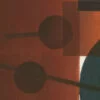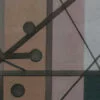There is a mysterious lack of mystery about friendship. Compared to love, it seems more stable and enduring. We find our friends earlier in life than our lovers, and they often stick around longer. Flattery and exaggeration may soften the ground for love, but friendship, what the Greeks called philia, has a reputation for being more clear-eyed, more transparent than eros. Perhaps for this reason there seems to be less to say about it.
But much of the distinction between love and friendship is dubious. For a long time in English, the word ‘friend’ blurred into ‘lover’, a fuzziness still preserved in words like ‘boyfriend’ and ‘girlfriend’, or in the German ‘Freund/in’. The bleed-over is taken attractively for granted in Nan Goldin’s photograph on our cover. Friendship and erotic love huddle together on a spectrum: they can both be ‘romantic’; they can both involve distortions and the telling of truths. There is unrequited friendship just as there is friendship at first sight. It can be just as fragile as love, just as capricious. Why we make a friend resists analysis as much as why we fall in love. ‘Because it was him, and because it was me,’ says Montaigne.
There are two standard ways that dead friends are memorialized in the anglophone West. The first is the obituary, a matter-of-fact account of the life and deeds of the departed. The economy of the form is part of its power. The second is the eulogy, whose immediacy and observance of propriety tends toward cliché and sentimentality. This issue of Granta seeks to avoid these models in search of a different kind of reckoning.
One of the most celebrated literary portraits of friendship in recent years is Elena Ferrante’s Neapolitan Quartet. The novels concern Lila and Lenù, two Italian women whose friendship is forged in childhood and becomes, at least for Lenù, the relationship that shapes her life. Ferrante’s books captured an old-fashioned, even Old Testament-style bond, in which a friend can be counted on to hate one’s enemies – when a boy-gangster in the neighborhood makes an unwanted advance on Lenù, and touches her arm, Lila takes a penknife to his throat. But the Quartet also testifies to the tenacious quality of friendship that many of us have experienced in our lives: friends made early in life, whom we cannot jettison any more than we can family, and who know a certain version of us so well that they alternatively stymie and comfort us.
Dead friends come to us unbidden – in unexpected moments, in dreams. They remain in conversation. In these pages, writers have transmitted the flickering aura of their departed friends. Michel Houellebecq told us he was relieved to write again about Benoît Duteurtre, because he was not satisfied with the rushed tribute he wrote at the time of his death. Tao Lin did not need a perfect memory to reconstruct his relationship with Giancarlo DiTrapano; he had saved all their messages, which he uses to unfurl the story of their friendship thread by thread.
Aatish Taseer’s portrait of V.S. Naipaul and Fernanda Eberstadt’s of Andy Warhol handle the same dilemma in different ways: both write of older mentors whose influence was as burdensome as it was formative. With time, they have been able to separate the gains of the friendship from the cost of its demands.
In ‘Nowhere’ by Yasmina Reza, translated by Alison L. Strayer, the author notes how absurd it is to feel nostalgia for a world that no longer exists. Though Reza refuses to indulge in sentimentality, her mind circles back to ‘covered-up and silenced things’. In reporting that took him to Ireland, William Atkins introduces readers to a new, watery way of doing away with the dead.
Susie Boyt, in our fiction in this issue, returns to the cast of her novel Loved and Missed, only this time the relationship under examination is between friends, rather than relatives. As we watch the final act of a long-standing friendship, Boyt encourages us to redraw the line that sometimes separates friendship from family. Marlen Haushofer’s novella Killing Stella was originally published in 1958, but unlike her most well-known book, The Wall, it has never been available in English. Haushofer recounts the story of Stella, a ‘stupid young person’ who runs ‘headlong into a murderous, metal machine’. Guilt-ridden and resentful, the narrator sinks into a carousel of feeling and tries to piece together the events that led to Stella’s death. In Joshua Cohen’s short story, a man’s entire posterity – or entire hope for posterity – suddenly vanishes.
Hannah Arendt was something like a high technician of friendship, who embalmed her friendships in her books. She believed friendship was inherently political because it modeled an ideal world. Renata Adler, one of Arendt’s youngest friends, spoke with Granta about how their relationship was formed. Like Houellebecq, Adler was unsatisfied with an appreciation she wrote after her friend’s death, but upon revisiting it, she found aspects of herself and Arendt that she could not grasp at the time.
A friend of this magazine died while the issue was in production. I got to know Gary Indiana toward the end of his life, when it seemed most of his closest friends were already gone – a long trail of the dead stretching from the doorstep of his East Village walk-up all the way back to Derry, New Hampshire. He ventriloquized these dead friends all the time. Gary had a rare stamina for long telephone calls, in which he insisted on unpicking the world’s inanities and evils together, not alone. I was one among many lucky recipients of his talent for friendship. He died the day before he was meant to come to the Granta party in New York for the China issue:
Dear Tom,
Imma commin’. Probably with Xian. There is another party the same night for NYRB, I think. They’re funny. I like Edwin. Also Nick. It will be fun to go to both, I’ve been housebound for the eon of the void.
Janique told me she’d seen a galley or layout of my piece, would it be possible for you to send that to me? I’m so pleased that you’re running it. I never publish anything. I could, of course, but it’s been nicer not to for a while.
Aside from the novel I have been working on a little film with some friends in Paris and Arles, via phone and email, based on a Balzac novel. Funnily, Balzac was a devotee of Mesmer. This was not unusual for people in France before, during, and after the Revolution, but Balzac’s involvement with it had escaped my notice until I read this late novel, where mesmerism really comes into the story in a conspicuous way. We’re playing this up in our movie in absolutely serious fashion. Mesmer would bind a group of patients to a tree he had ‘magnetized,’ the rope couldn’t have any knots in it because they would interfere with the circulation of invisible fluids. If a patient proved recalcitrant, Mesmer himself would sometimes appear, in a lilac taffeta robe, and ‘drill fluid into the patient from his hands, his imperial eye, and his mesmerized wand.’ He could cure anything, apparently.
Best regards,
Gary
The opening of the novel Gary Indiana was working on appears in this issue. In a turn of events that would have drawn his grim laughter, the collection of his books and papers – sent to California for safekeeping after his death – was consumed in the Los Angeles fire on the day it arrived.
I thank Sigrid Rausing for her steadfast support. Her friendship with Johanna Ekström, expressed in their book And the Walls Became the World All Around, was one of the seeds that got this issue started.
Photograph by Nan Goldin, The Hug, New York City, 1980






